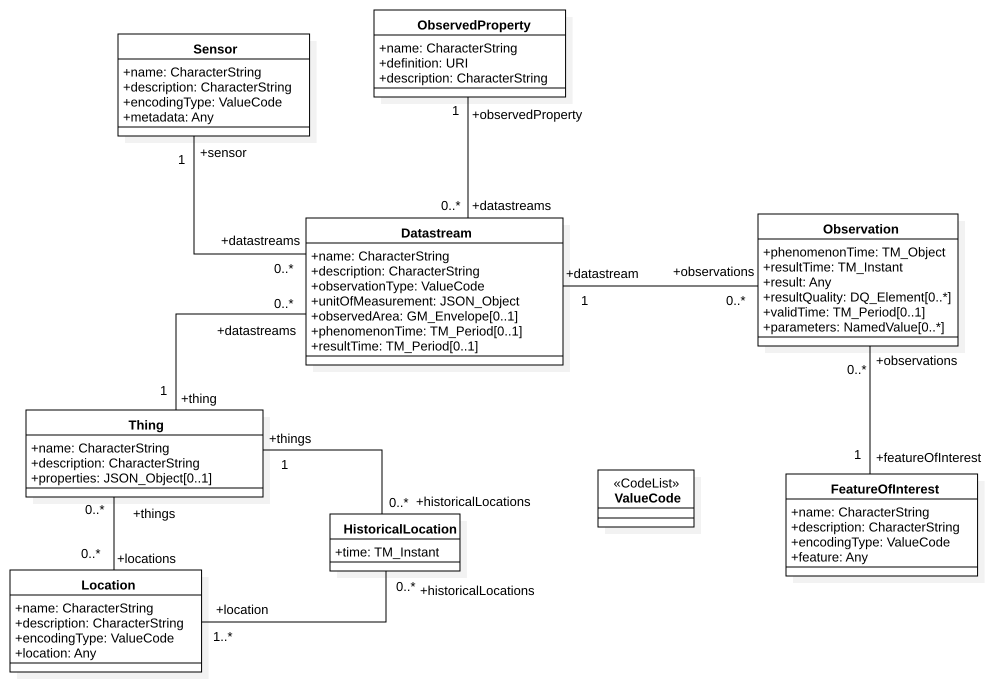Datastream is quite "homogeneous" as it tries to represent single streams of data,

namely each observation in a Datastream has the same Sensor, ObservedProperty, and Thing (may be equivalent to sosa:Platform). It doesn't necessarily have the same FoI and generally does not have the same phenomenonTime or validTime. An alignment should have those homogeneity constraints.
I'm wondering if it might be helpful to create a Sensor Things ontology for the purposes of alignment.
According to the proposal [1] an ObservationCollection should be homogeneous in one or more of
feature-of-interest ultimate feature-of-interest observed-property procedure sensor phenomenon-time result-time i.e. ObservationCollections can be homogeneous on different properties.
See discussion here [2] for confirmation that addition of this class might accommodate several existing use-cases, for example streaming.
While the requirement for 'one or more' are not yet axiomatized, that would be a relatively easy tweak. This issue to host discussion of whether these homogeneity constraints are enough or too much.
[1] https://w3c.github.io/sdw/proposals/ssn-extensions/ [2] w3c/sdw-sosa-ssn#7